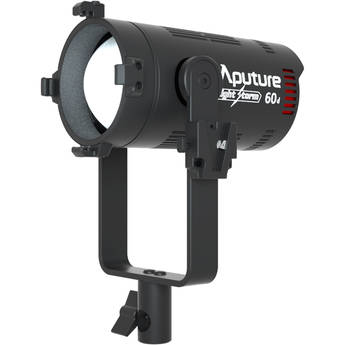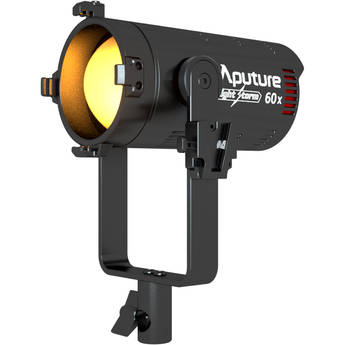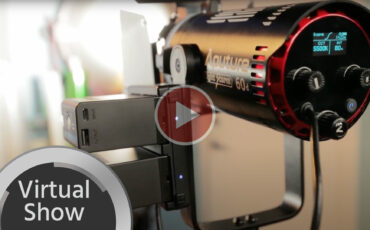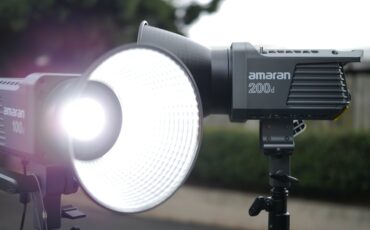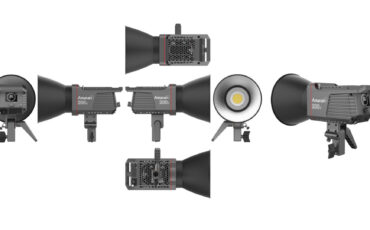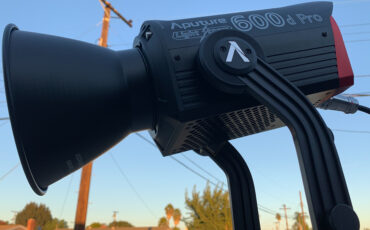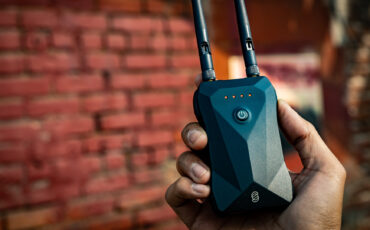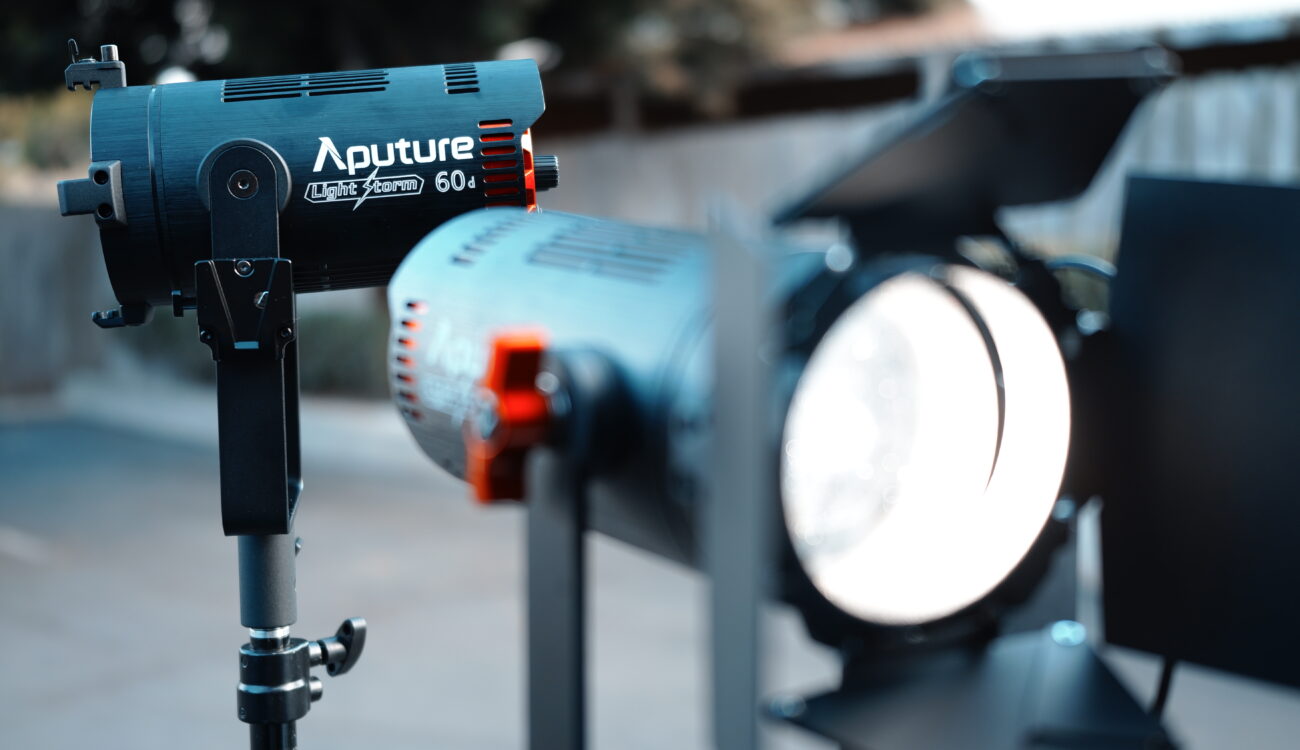
Nestled in the variety of recent Aputure releases (see the 600d Pro and Amaran series) are the focusable LS 60d and the 60x fixtures. During our Virtual Trade Show back in May of 2020, I spoke with Aputure President Ted Sim about these lights and the good news is that they’re shipping now. Abiding by pandemic restrictions, I’ve had a chance to give these lights a spin, and here’s the full field review.
Every once In a while, a fixture becomes so popular on film sets that it is considered, well, a fixture on sets everywhere. It’s impossible to talk about the Aputure 60x and the 60d without first giving a nod to the classic Tungsten dual-lens Dedolight. Initially developed in the mid-’80s and then improved upon in the early 2000s, the Dedolight has once again been updated based on LED tech evolution.
If you’ve worked in any aspect of the film & television industry over the last several years, the odds are that there was at least one Dedolight on the truck ready to go. These fixtures are also extremely reliable, last forever with the occasional bulb change all that’s needed.
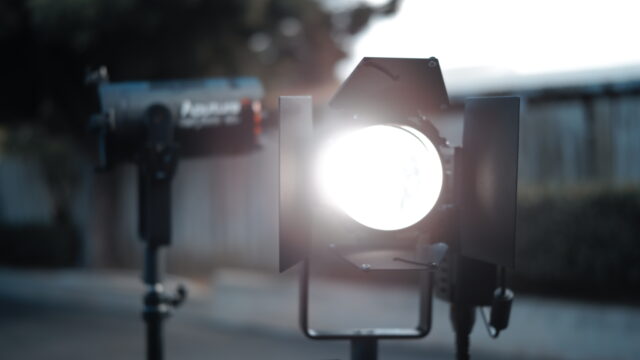
Most DP’s and gaffers think of the Dedolight as having a precise, very defined beam useful for a variety of things from precision tabletop product work, to use as stage practicals, or for creating a small “clean” targeted highlight in a corner of the frame. Simply put, Dedolights work in a ton of situations and have an entire universe of first-and third-party accessories supporting different use cases.
The sophisticated optics of the Dedolight have meant that over the years, few competitors have been able to mount much of a challenge. And this despite the nearly universal interest amongst gaffers and cinematographers to move away from hot Tungsten lights and towards LED technology. All of which brings us to the Aputure 60d and 60x. If you’re familiar with the now discontinued focusable Aputure Mini 20, I think you’ll find the 60d and 60x are an improvement.
First impressions
Both the Aputure 60d (d = daylight at 5500K) and 60x (x = bi-color from 2700K to 6500K) ship in semi-rigid cases, perhaps a third of the size of an Aputure 300d MK II case, though the construction materials feel similar. Everything about these lights is wonderfully compact and that makes it an easy decision to throw them into the mix onset.
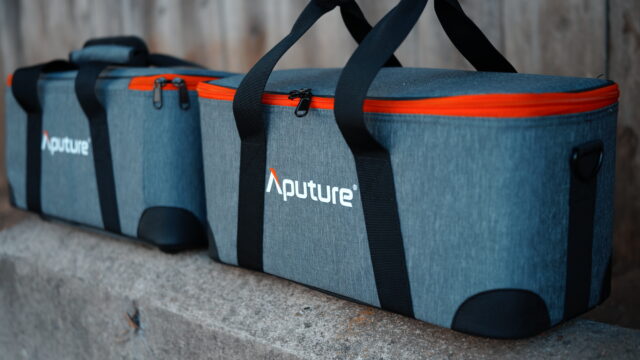
Everything fits snuggly inside the case and each kit includes the following:
- Lamp Head (either the daylight or bi-color variant depending on your order)
- Bowens mount adapters – allowing use of your favorite Aputure accessories
- Dual Sony NP-F Battery Plate Adapter
- Small 4-Way Barn Doors (no adapter required)
- AC Adapter with Power Cord
- D-Tap Cable
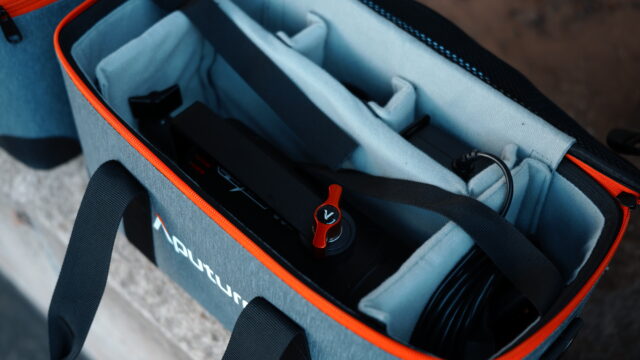
I’d be remiss if I didn’t give a shout out to the Aputure engineers for the exterior look of the fixture. The matte black metal IP54 rated exterior mixed with the rear bright red fringe and clear plastic control interface looks great. Sure, the most important thing is how these lights perform on-camera, but we filmmakers like our tech to have a little flare here and there, right? These lights have style.
Given the size of the soft case, the lamp head is beefier than you might expect. Another plus is that both the 60d and 60x feel like they’d do just fine in a long-term rental environment. You’ll also find you won’t necessarily need to rely on a C-stand for safe mounting – a standard light stand will do just fine under the weight of the lamp head. If you’ve used a Dedolight in the past, then the form factor of the lamp head will feel familiar — it’s not a carbon copy by any means, more like worthy cousins.
Controlling each fixture is done through a rear LCD display using a combination of three knobs. One knob changes the beam angle and the other two navigate the electronic menu. This is a departure from other Aputure lights that use a separate stand-mounted control box. In some ways, it feels similar to the new Amaran series — though here the build materials are superior. The knob that controls the beam angle takes some muscle to manipulate, but then maybe I need to work on my thumb strength!
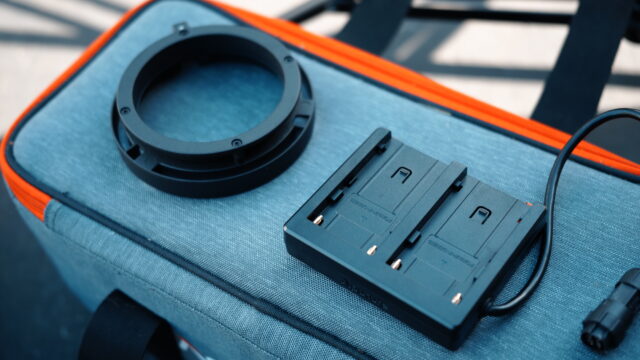
I’m a particular fan of the V-lock accessory wedge for mounting the Sony NP-F battery adapter or the AC Adapter block. It’s worth noting that given the lack of physical space here (it’s a small light after all), you can have a battery adapter mounted or the AC adapter mounted, but not at the same time.
Usage
You aren’t reaching for the 60x or 60d to light the side of a building. We’re going for precision here and the 15-45 degree adjustable spot/flood beam angle is ideal for that type of work.
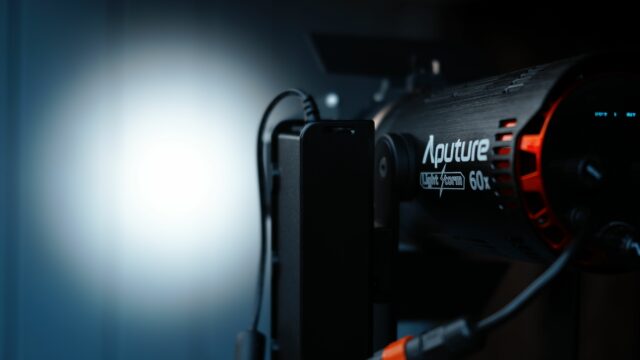
I confess I’m a massive fan of the Light Bridge CRLS system and I used the 60x and 60d on a few NDA projects specifically with the 25cm and 15cm sized CRLS panels. Simply spot the beam to fill the CRLS panel size of your choice (though 50cm is probably too large) and you’re off to the races.
Unfortunately, I didn’t have a chance to take these fixtures on to a professional product shoot (mix of scheduling and pandemic concerns), but I am convinced these would be perfect for that application. For product shooting, you’re always trying to highlight or hide different parts of the product and this is exactly the right tool for that. Since you aren’t getting a ton of output here, for high frame-rate slow-motion applications in certain situations, you might need to reach for an Aputure 300d MK II/19-degree spotlight combo.
I didn’t get a chance to test the upcoming Spotlight Mini Zoom accessory with these lights, but I can see that an additional level of control could be useful for product or for highlighting a logo or different art object in a given scene.
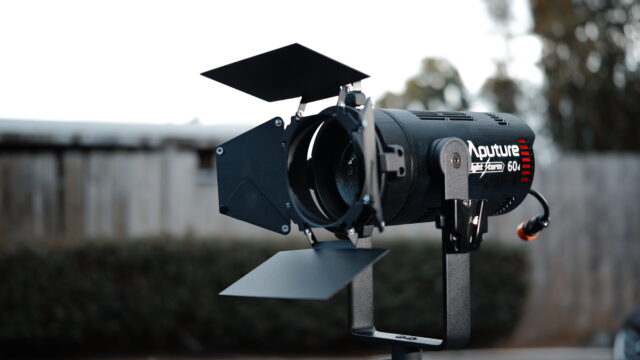
I don’t carry a ton of compatible Sony batteries (I have a few for smaller SmallHD monitors), but I recognize there are a lot of NP-F users out there. For you, there’s an included D-tap, but personally, I don’t have a Gold Mount plate able to secure the V-lock accessory system. You’ll need two NP-F batteries mounted for powering either fixture to 100% output.
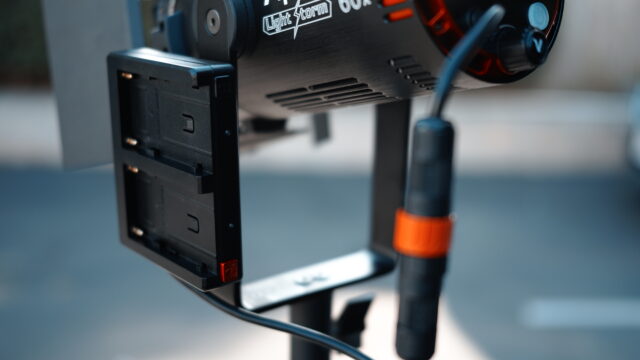
Control
The rear control interface is a particular design standout and by using the top two knobs, it’s easy to navigate the bright menu. You can dim in 1% increments from 0-100%, change color temp between 2700K – 6500K (in the “X” version) as well as select different special effects like Faulty Bulb, Lightning, TV, and more within the menu. You can also select different dimming curves like exponential or logarithmic to linear and S-Curve.
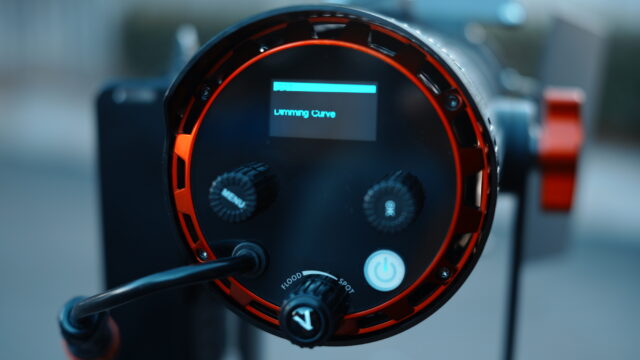
Everything is also controllable through the Sidus Link App available for Android or iOS devices. It’s worth flagging that neither fixture has wireless or wired DMX capabilities.
Overall output and color temperature readings
First, we’ll start with the bi-color “x” version. Keep in mind that beam angle can heavily influence output when comparing to other fixtures. I grabbed a few measurements on my Sekonic C-700U Spectrometer (now updated with the C-800U) to see how accurately the Aputure 60x handled color temp (kelvin) and output (lx) from a distance of 3 ft. Here are my readings with a target of 5600K with the beam angle fully flooded to 45 degrees with output set to 100%. I had no accessories attached for any of these readings.
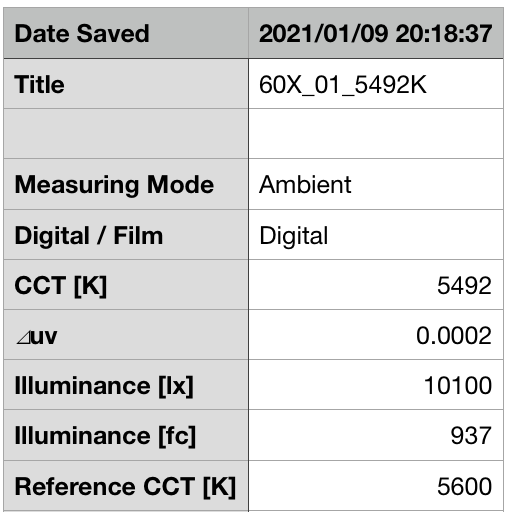
A reading of 5492K with a target of 5600K is excellent and well within a normal margin. Now, for comparison, here’s a measurement from the Aputure 60x with a target of 3200K – again fully flooded at 45 degrees with output set to 100%.
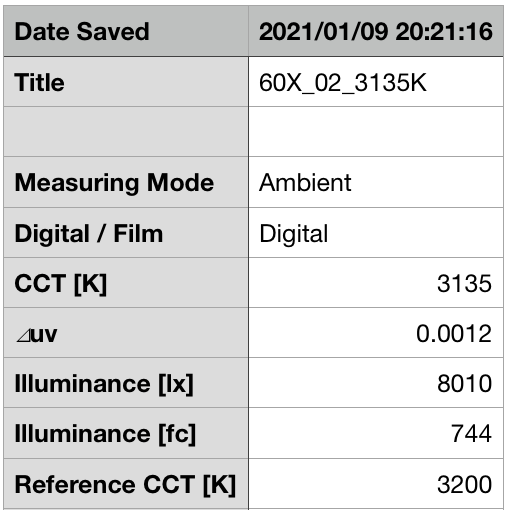
Here we hit 3135K – very close to 3200K and we do see a slight output hit from 10100lx to 8010lx. Now let’s try again with a target of 4700K.
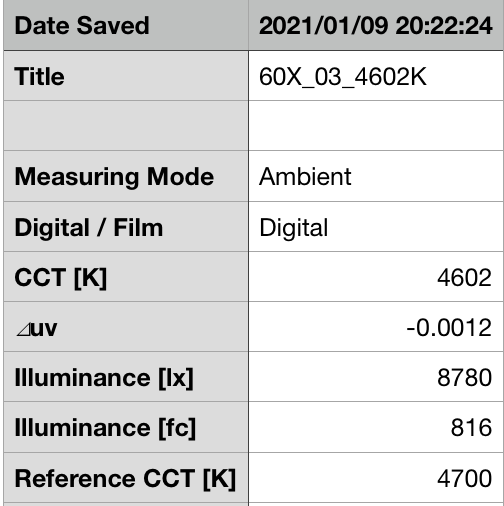
Again, we’re within a hundred kelvin here with our reading of 4602K from our target of 4700K – also excellent. It makes sense that our illuminance value would end up somewhere in the middle between the two when we set our CCT between 56K and 32K. No surprises there – another excellent result.
Here are my readings from the Sekonic C-700U from the Aputure 60d with a target of 5500K at 3 feet fully flooded to 45 degrees with output set to 100% and no accessories.
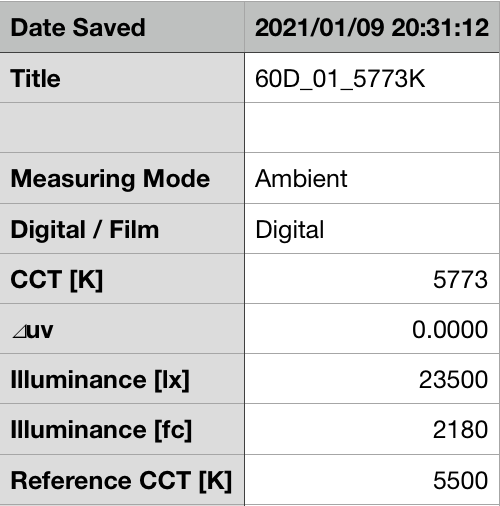
My reading of 5773K puts us a few hundred kelvin away from 5500K. Still excellent when compared to past fixtures I’ve tested, but a slightly larger differential when compared to the 60x. This reading also tells us you get double the output with the 60d when compared to the 60x set to daylight. Bi-color fixtures generally don’t have quite as much output as a single color temp fixture.
I also decided to test the 60d set to full spot at 15 degrees and 100% output at the same distance of 3 feet. Target remains 5500K for this daylight fixture.
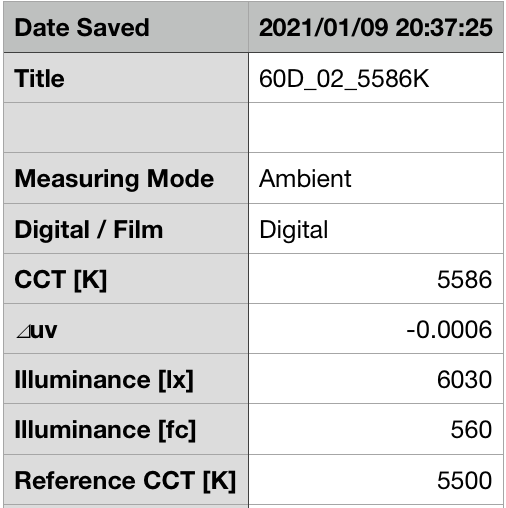
With a 15 degree beam angle you do end up closer to 5500K. Something to consider, but I would be personally surprised if you see much of a difference in-camera in the color temperature between full spot and full flood.
In short, all these results are excellent in my opinion and hopefully will give potential buyers a bit more insight into how both fixtures handle color and overall output.
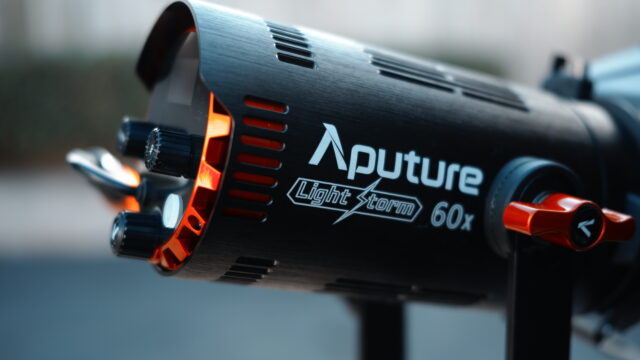
Conclusion
Both the 60d and 60x help complete the latest generation of Aputure lights. Depending on your output and accessory needs, each is versatile enough that they might be the only fixtures you need from the lineup, that is if you don’t require DMX control. You’ll have the usual purchase decisions to make here regarding bi-color versus the additional output bump of daylight-only. Either way, the stellar build of the 60d and the 60x mixed with Sidus App Bluetooth integration means you can’t go wrong.
Link: Aputure Website
What do you think? Have you used the Aputure Mini 20 and would you consider upgrading to a 60d or 60x? Let us know in the comments below!
